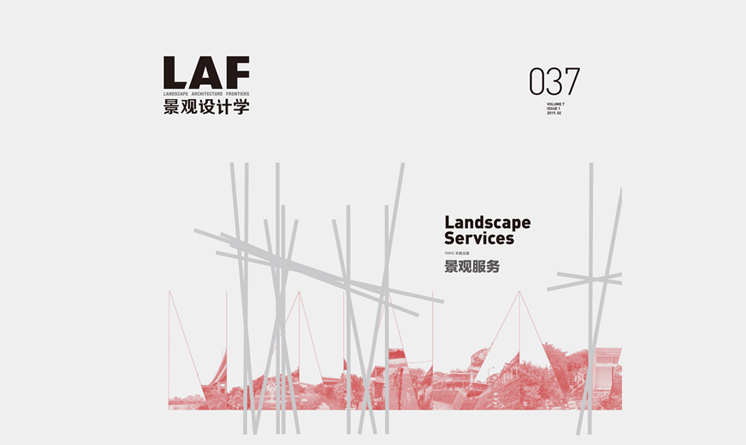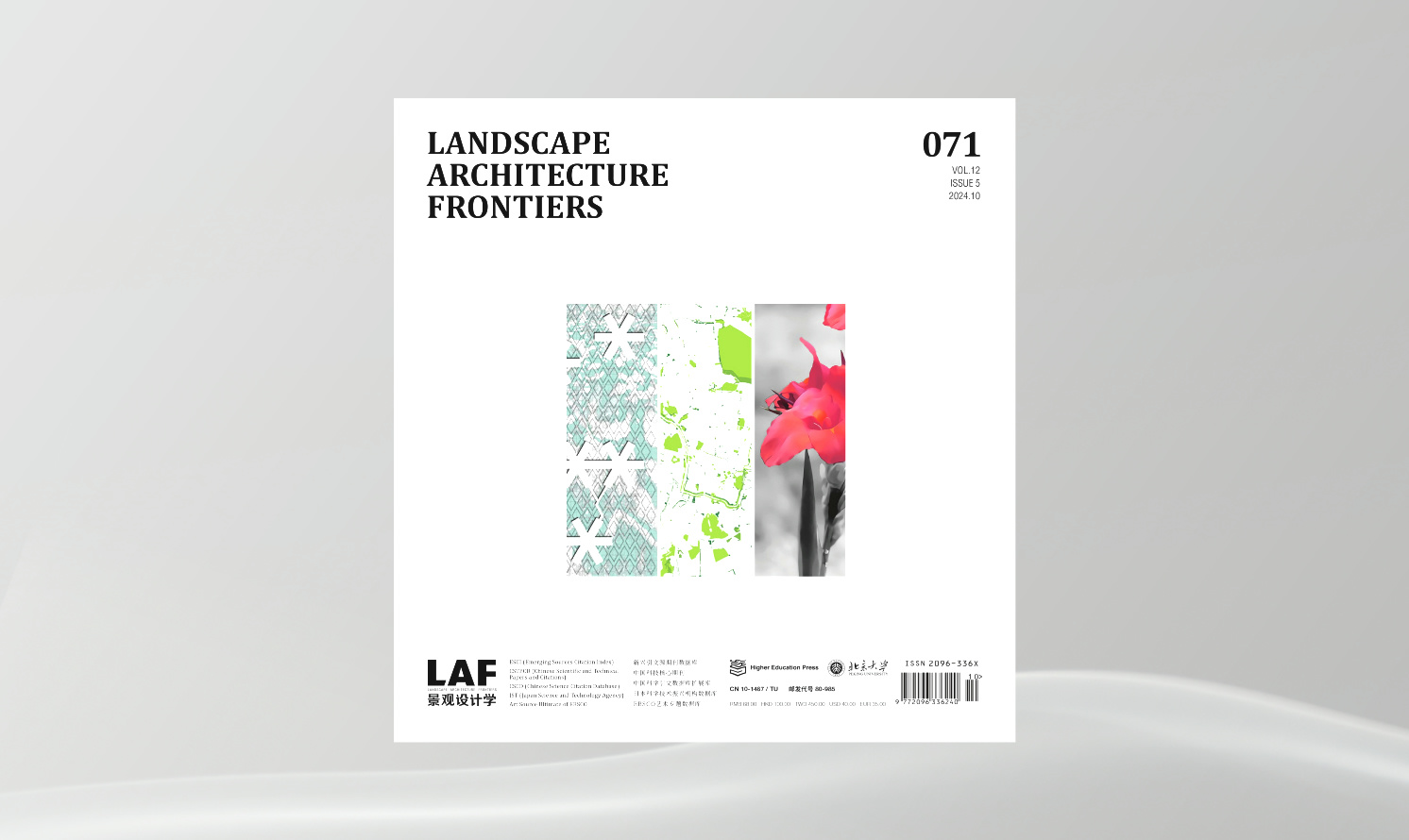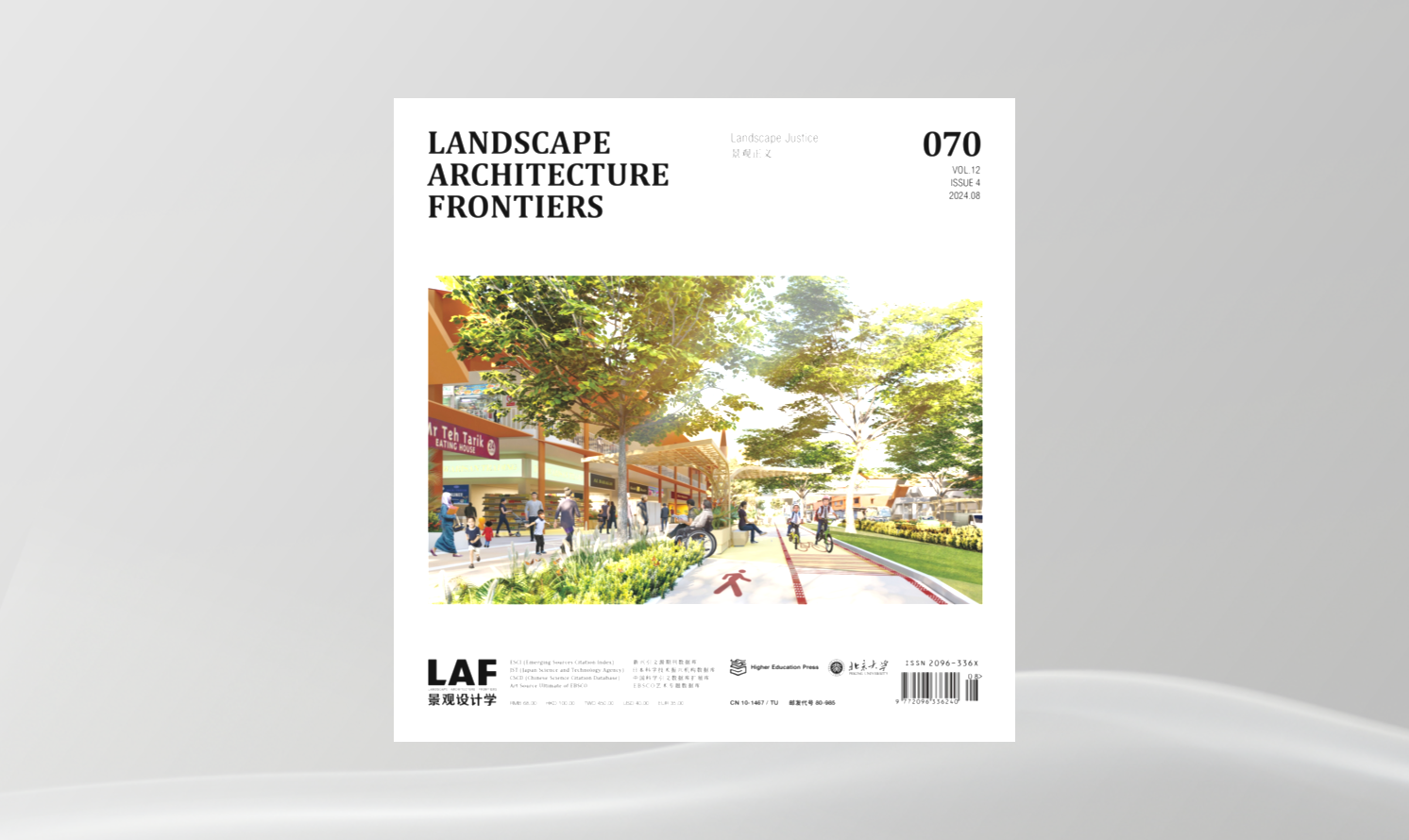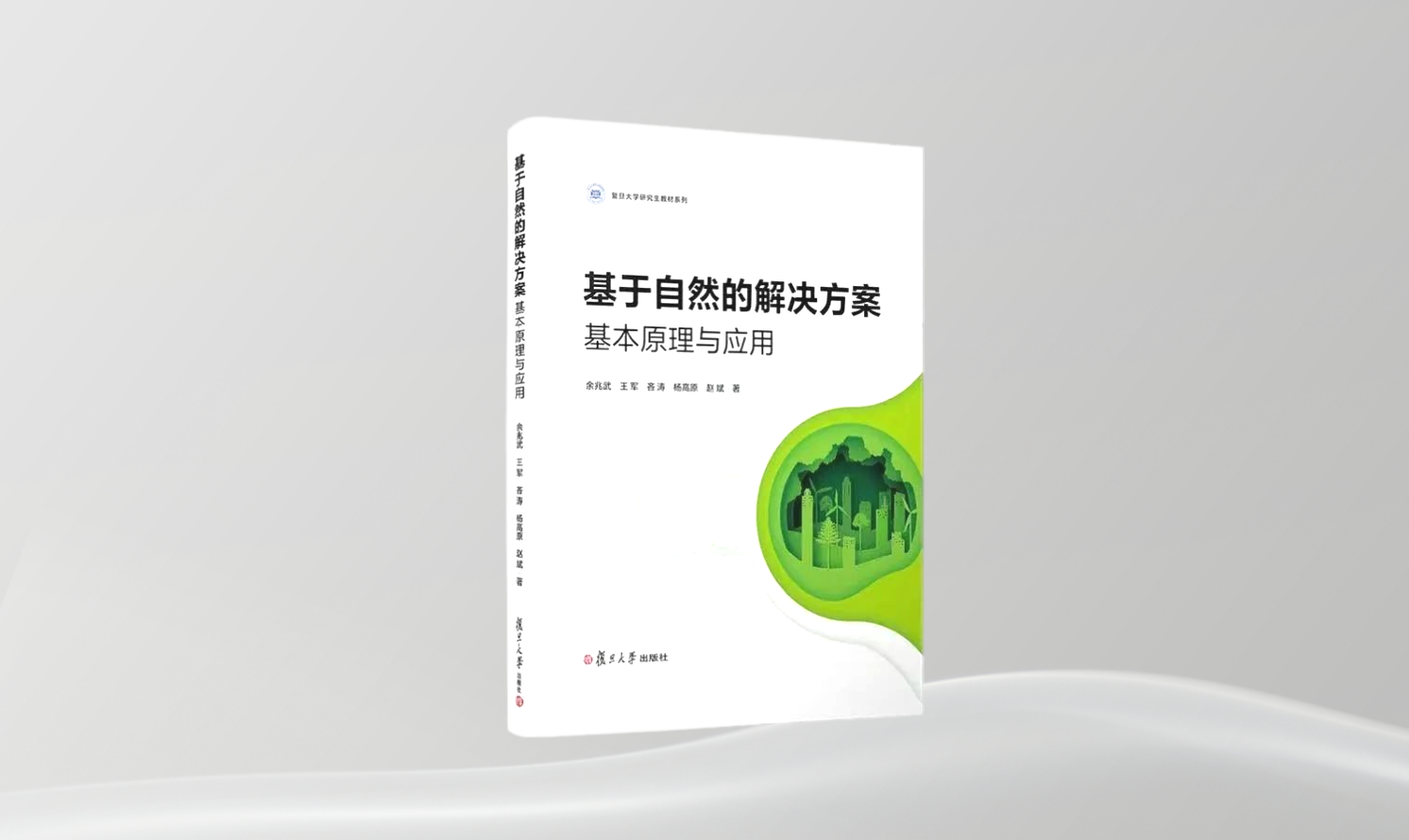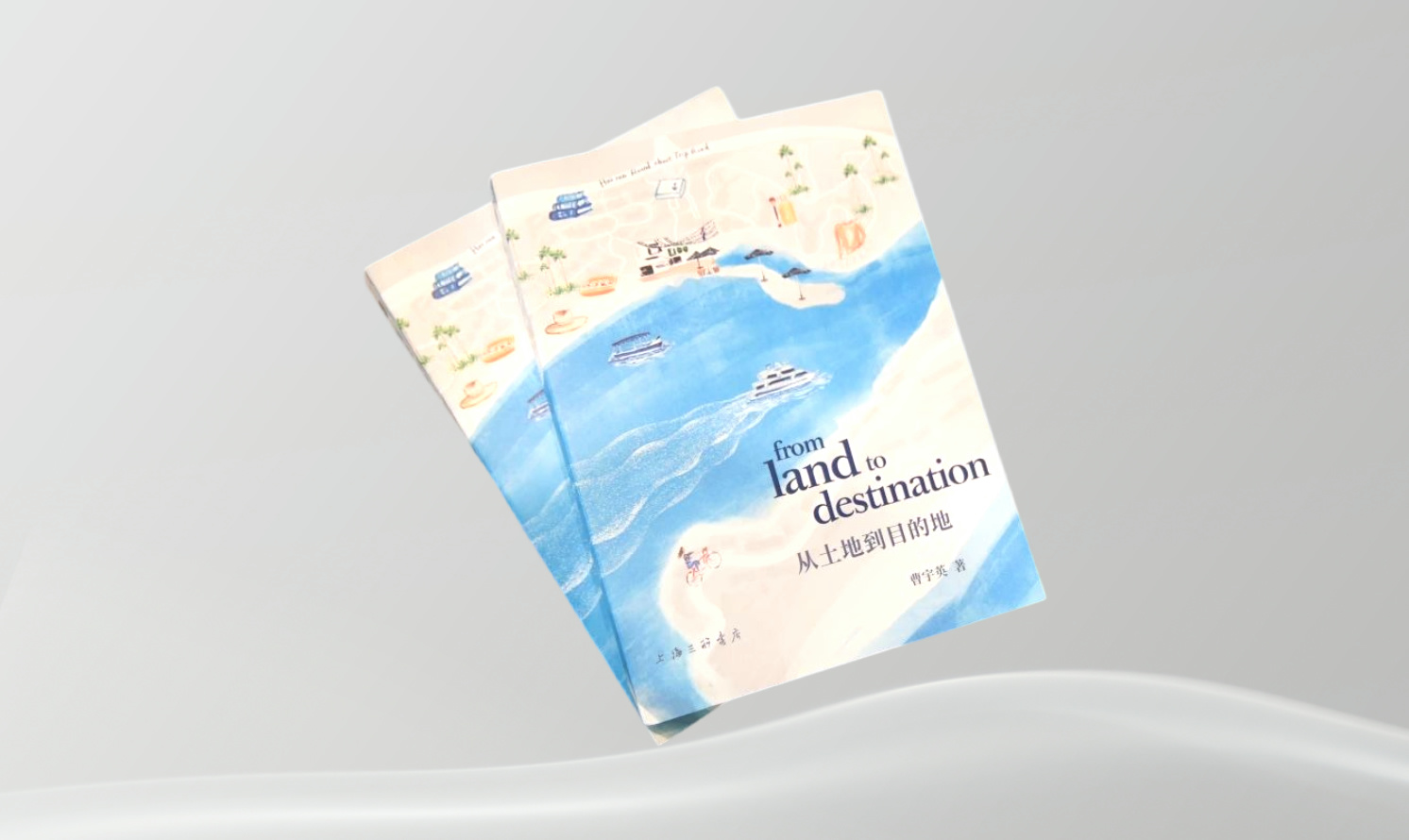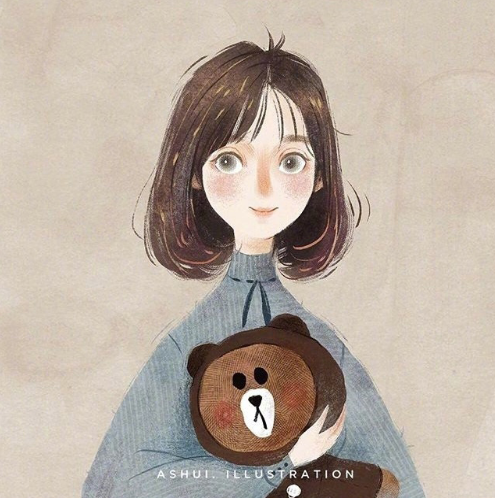設(shè)計(jì)生態(tài)的不同視角
Perspectives of Designed Ecologies
作者:王志芳����,袁振宇 WANG Zhifang, YUAN Zhenyu
摘要
設(shè)計(jì)生態(tài)是指在人居環(huán)境中,特別是生態(tài)破壞較嚴(yán)重的地方�,設(shè)計(jì)積極主動(dòng)介入生態(tài)系統(tǒng)功能優(yōu)化、修復(fù)或重建的過(guò)程。與生態(tài)設(shè)計(jì)不同����,設(shè)計(jì)生態(tài)是對(duì)復(fù)雜人居環(huán)境的創(chuàng)造性介入和改造。本文從相關(guān)概念的對(duì)比出發(fā)����,將設(shè)計(jì)生態(tài)歸納為4個(gè)視角:再造自然風(fēng)景、再造本土生境��、加速自然修復(fù)��,以及優(yōu)化自然系統(tǒng)�����。以此為基礎(chǔ)��,本文嘗試提出設(shè)計(jì)生態(tài)的三大內(nèi)涵:1)生態(tài)的功能性�,即設(shè)計(jì)需要?jiǎng)?chuàng)造一個(gè)可以自我維護(hù)的生態(tài)系統(tǒng)�;2)過(guò)程的功效性,即需要使設(shè)計(jì)結(jié)果優(yōu)于自然做功����,甚至可以促進(jìn)生態(tài)演進(jìn);3)結(jié)果的體驗(yàn)性����,即設(shè)計(jì)需要疊加美學(xué)體驗(yàn)以使生態(tài)系統(tǒng)更符合人類社會(huì)的需求����。作者指出�,設(shè)計(jì)生態(tài)的有效推進(jìn)有賴于設(shè)計(jì)實(shí)踐與生態(tài)研究雙方面的努力,包括對(duì)于地方生態(tài)系統(tǒng)�����、生態(tài)系統(tǒng)自我演替過(guò)程及生態(tài)系統(tǒng)承載力的研究����,以及設(shè)計(jì)實(shí)踐對(duì)于改善人居體驗(yàn)的探索。
關(guān)鍵詞
設(shè)計(jì)生態(tài)���;生態(tài)設(shè)計(jì)��;生態(tài)系統(tǒng)���;維度;景觀服務(wù)�����;人居環(huán)境
Abstract
Designed ecology refers to a process of active and purposive design interventions that help enhance functional improvement, restoration, or reshaping of ecosystem in human settlements, especially in the areas suffering from severe ecological degradation. Different from ecological design, designed ecology is to creatively intervene and improve human beings’ complicated living environment. Starting from an examination of related concepts, this paper reviews designed ecology from four perspectives: creating natural environment; reintroducing native habitat; enhancing natural regeneration; and tending natural ecosystem. It further defines designed ecology at three levels: 1) ecological functionality, i.e. the design creates a self-maintaining ecosystem; 2) succession efficiency, i.e. the effect of the designed succession surpasses the results of natural regeneration or the design helps promote natural regeneration; and 3) landscape experience, i.e. the design offers aesthetic services to better respond to the needs of human society. The authors argue that an effective promotion of designed ecology relies on both the efforts of design practice and ecological study, including research on regional / local ecosystem, self-succession of ecosystem, and ecosystem capacity, as well as exploration of improving human living experience through design practice.
Key words
Designed Ecology; Ecological Design; Ecosystem; Dimension; Landscape Service; Human Living Environment
森林都市主義:比利時(shí)索尼安森林的城市-生態(tài)策略及實(shí)施途徑
Forest Urbanisms: urban and Ecological Strategies and Tools for the Sonian Forest in Belgium
作者:布魯諾·德·繆德?tīng)枺瑒P利·香農(nóng)����,阮明匡 Bruno De MEULDER, Kelly SHANNON, Minh Quang NGUYEN
摘要
本文通過(guò)回顧大布魯塞爾及周邊地區(qū)的索尼安森林與人居環(huán)境交融演變的發(fā)展歷程,闡釋了“森林都市主義”這一概念��。森林景觀被認(rèn)為是生態(tài)(提供大量生態(tài)系統(tǒng)服務(wù))和城市環(huán)境的基本結(jié)構(gòu)����。森林都市主義是城市建設(shè)的一種形式,其依靠森林作為跨越(與交通���、人居環(huán)境和生態(tài)相關(guān)的)尺度和維度的結(jié)構(gòu)性要素��。城市建設(shè)與大面積森林的相互作用體現(xiàn)為地域尺度上具有不同性質(zhì)的各式森林形態(tài)��。本文揭示了布魯塞爾地區(qū)的森林和城市建設(shè)之間的相互影響�,其中���,城市環(huán)境的尺度、密度�、品質(zhì)和發(fā)展壓力不盡相同,從坐落于森林中的人類定居點(diǎn)到擁有鮮明肌理的森林-城市的形式和方式也有所差異。索尼安森林及其周圍環(huán)境隨著時(shí)間發(fā)生的持續(xù)變化���、所面臨的當(dāng)代挑戰(zhàn)��,以及未來(lái)可能的發(fā)展方向都非常引人矚目�。本文探究了森林砍伐與造林�、人居環(huán)境與城市環(huán)境重建之間平行卻又相互交織的過(guò)程和復(fù)雜關(guān)系。最后����,作者認(rèn)為,當(dāng)下迫切需要通過(guò)重新梳理開(kāi)發(fā)與保護(hù)的關(guān)系����,來(lái)重建城市與森林之間生產(chǎn)與消耗的平衡。
關(guān)鍵詞
森林�����;都市主義�;比利時(shí);設(shè)計(jì)研究���;索尼安森林
Abstract
This article unfolds the notion of “forest urbanism” through a discussion on the intertwined evolution of the Sonian Forest and settlement development in the greater Brussels environs through history. The forest landscape is considered a fundamental structure, both for ecology (delivering numerous ecosystem services) and the urban environment. Forest urbanism is an urbanism that relies on the forest as a structuring device across scales and dimensions (in relation to mobility, settlement, and ecology). The interplay of urbanism with the large forest domain operates at the territorial scale and various forest domains of very different natures. It unravels forest and urbanism interplays within the Brussels region with quite different urban contexts (scale, density, quality, development pressure, etc.) and with quite different forms and modalities (from settlements embedded within the forest to the forest-city as adjacent domains). The Sonian Forest and its surroundings are exceptionally compelling with regards to both their continuous transformation over time, contemporary challenges, and possible future trajectories. The article traces the parallel, intertwined processes and complex relations of deforestation / afforestation and settlement / restructuring of urban environments. As will become evident, the relationship that always iterated between a productive and consumptive one, urgently requires a recalibration where exploitation / consumption is balanced by protection / production.
Key words
Forest; Urbanism; Belgium; Design Research; Sonian Forest
北京市海淀區(qū)綠地結(jié)構(gòu)功能性連接分析與構(gòu)建策略研究
Functional Connectivity Analyses and Construction Strategies of the Structure of Green Space Network in Haidian District of Beijing
作者:王博婭�,劉志成 WANG Boya, LIU Zhicheng
摘要
城市綠地結(jié)構(gòu)布局一直是風(fēng)景園林學(xué)科研究的重點(diǎn)之一,構(gòu)建具有生態(tài)價(jià)值的空間結(jié)構(gòu)是城市建設(shè)的迫切需求��。本文對(duì)北京市海淀區(qū)綠地網(wǎng)絡(luò)結(jié)構(gòu)功能性連接與構(gòu)建策略進(jìn)行研究����,結(jié)合生態(tài)系統(tǒng)服務(wù)評(píng)估與權(quán)衡(InVEST)模型、最小費(fèi)用模型等方法構(gòu)建阻力面��、確定連接路徑���;采用功能性連接指數(shù)(NL�、NC�、IIC、PC和dIIC)表示不同距離閾值下綠地網(wǎng)絡(luò)結(jié)構(gòu)特性�����。研究結(jié)果表明����,整體而言,最適合海淀區(qū)綠地網(wǎng)絡(luò)現(xiàn)狀結(jié)構(gòu)的距離閾值為2 200m��;此時(shí)形成了10個(gè)組分共353條路徑����,確立了西山、頤和園等6個(gè)需優(yōu)先保護(hù)的重要節(jié)點(diǎn)和三條重要路徑����。研究進(jìn)一步顯示,以喬木為目標(biāo)物種的林地網(wǎng)絡(luò)和以水禽為目標(biāo)物種的水域網(wǎng)絡(luò)的破碎化程度較高�,其中林地網(wǎng)絡(luò)在西部山區(qū)、北部平原和東南城區(qū)分別形成了優(yōu)勢(shì)斑塊結(jié)構(gòu)����、局部網(wǎng)絡(luò)結(jié)構(gòu)和點(diǎn)狀組團(tuán)結(jié)構(gòu)。研究同時(shí)證明�,通過(guò)增加10條重要連接路徑可使林地網(wǎng)絡(luò)連接度提高至原來(lái)的1.7倍,使整體結(jié)構(gòu)由破碎化網(wǎng)絡(luò)變成完整���、沿多方向延伸的�、穩(wěn)定而具有韌性的網(wǎng)絡(luò)結(jié)構(gòu)�����。最后���,研究針對(duì)城市綠地結(jié)構(gòu)的構(gòu)建提出了明確目標(biāo)�����、確定目標(biāo)物種�,識(shí)別并保護(hù)重要節(jié)點(diǎn)及重要連接路徑,增加潛在連接路徑�����、完善綠地網(wǎng)絡(luò)結(jié)構(gòu)等策略�����,從而高效改善和提升城市生態(tài)品質(zhì)�����。
關(guān)鍵詞
城市綠地結(jié)構(gòu)�����;功能性連接����;生態(tài)系統(tǒng)服務(wù)評(píng)估與權(quán)衡(InVEST)模型;最小費(fèi)用模型����;構(gòu)建策略��;生物多樣性保護(hù)
Abstract
Urban green space structure and pattern have been one of the highlights in Landscape Architecture studies, accompanying with urgent demands of promoting ecological spatial structures in urban construction. Focusing on functional connectivity and construction strategies of the structure of green space network in Haidian District of Beijing, this research builds resistance surface and identifies linkages through habitat quality evaluation of the InVEST Model and the simulation with the Least-Cost Model, while adopting functional connectivity index (NL, NC, IIC, PC, and dIIC) to indicate the structural characteristics of green space network at varied distance thresholds. Results reveal that, on the whole, the distance threshold of 2,200 meters is most appropriate for the structure of the existing green space network of Haidian District, when 10 components and 353 linkages are identified and six important nodes and three important linkages that require a protection priority are further determined. Findings also disclose that the forest network of target tree species and that of water network of target water bird species are highly fragmented. Forest network serves in forms of dominant patch structure, local network structure, and fragmented cluster structure in the western mountainous area, the northern plain area, and the southeastern urban area, respectively. Moreover, the research proves that by introducing ten important linkages, the connectivity of forest network can be improved by 1.7 times, completing the overall structure in multiple directions and helping form a stable and resilient structure of the network. Finally, the research puts forward strategies for urban green space construction, including identifying construction objectives and target species, identifying and protecting important nodes and important linkages, and introducing possible important linkages and improving the structure of green space network, to help efficiently improve urban ecological quality.
Key words
Urban Green Space Structure; Functional Connectivity; InVEST Model; Least-Cost Model; Construction Strategy; Biodiversity Conservation
雨洪管理多功能景觀文化生態(tài)系統(tǒng)服務(wù)的重要性-滿意度研究
Importance — Satisfaction Analysis of Cultural Ecosystem Services of Multi-Functional Landscapes Designed for Stormwater Management
作者:楊青娟,梅瑞狄斯·弗朗西絲·多比 YANG Qingjuan, Meredith Frances Dobbie
摘要
基于可持續(xù)理念的雨洪管理多功能景觀是城市中重要的生態(tài)系統(tǒng)服務(wù)供給主體�,能為公眾提供多種文化服務(wù),兼具環(huán)境�、美學(xué)、教育與經(jīng)濟(jì)等多種效益��。由于難以進(jìn)行定量分析���,文化生態(tài)系統(tǒng)服務(wù)的評(píng)估研究相對(duì)較少�����,導(dǎo)致業(yè)界與公眾一直對(duì)其重要性認(rèn)識(shí)不足���。重要性-滿意度分析(Importance-Satisfaction Analysis,簡(jiǎn)稱ISA)以人的主觀感知為依據(jù)��,使抽象的文化生態(tài)系統(tǒng)服務(wù)功能變得容易理解和評(píng)價(jià)�����。本研究以不同類型的雨洪管理景觀要素為例,探究了ISA方法在文化生態(tài)系統(tǒng)服務(wù)評(píng)價(jià)和景觀設(shè)計(jì)管理決策優(yōu)化方面的實(shí)用性�。結(jié)果顯示:審美欣賞、休閑/生態(tài)旅游��、場(chǎng)所感是城市雨洪管理景觀所提供的最受重視的文化生態(tài)系統(tǒng)服務(wù)���;同時(shí)���,公眾對(duì)某些類型的雨洪管理景觀提供的文化生態(tài)系統(tǒng)服務(wù)的滿意度與重要性感知之間還存在差距。研究認(rèn)為�,ISA方法可為改善雨洪管理多功能景觀的設(shè)計(jì)與管理決策提供有益的參考。
關(guān)鍵詞
重要性-滿意度分析���;文化生態(tài)系統(tǒng)服務(wù)�;景觀設(shè)計(jì)��;多功能景觀�����;水敏性城市設(shè)計(jì)
Abstract
The multi-functional landscapes for sustainable stormwater management play a significant role in providing various benefits on the environment, aesthetics, education, economy, etc. through the cultural ecosystem services, which have been underestimated by both the professionals and the public, due to the difficulty in their interpretation and quantification. The Importance-Satisfaction Analysis (ISA) makes it easier by evaluating the cultural ecosystem services with human’s perception, and was tested with the multi-functional landscapes for stormwater management in this research. The results show that aesthetic value, recreation / eco-tourism, and sense of place are the most valued cultural ecosystem services. Those cultural ecosystem services with a gap between their perceived importance and the public satisfaction with their delivery are also identified. ISA can discover the public’s perception and expectation of the stormwater management landscapes, which helps the decision-making about their improvement a lot.
Key words
Importance-Satisfaction Analysis; Cultural Ecosystem Services; Landscape Architecture; Multifunctional Landscapes; Water Sensitive Urban Design
設(shè)計(jì)生態(tài)學(xué)的景觀績(jī)效實(shí)證研究——以天津橋園公園鹽堿地改善為例
Empirical Research on the Performance of Designed Ecologies through a Field Observation of Saline-Alkali Soil Improvement in Qiaoyuan Park of Tianjin
作者:劉潔 LIU Jie
摘要
快速城市化導(dǎo)致自然生態(tài)系統(tǒng)退化����,其調(diào)節(jié)�、凈化����、生產(chǎn)等服務(wù)受到嚴(yán)重破壞。景觀設(shè)計(jì)作為當(dāng)代改善城市環(huán)境的重要手段����,應(yīng)當(dāng)更加重視對(duì)景觀功能與過(guò)程的設(shè)計(jì)�����,使公園�����、綠地等景觀成為城市重要的生態(tài)服務(wù)供給者����,而非城市的負(fù)擔(dān)。為此����,俞孔堅(jiān)提出了“設(shè)計(jì)生態(tài)學(xué)”概念:它是人工的生態(tài)或人工設(shè)計(jì)的生命(包括人)與自然環(huán)境相互作用的系統(tǒng),是景觀設(shè)計(jì)及規(guī)劃塑造的生態(tài)過(guò)程,也是一種跨尺度��、跨學(xué)科的實(shí)證主義研究����。本研究以基于此概念設(shè)計(jì)的天津橋園公園為案例,利用生態(tài)學(xué)實(shí)驗(yàn)等方法��,對(duì)公園鹽堿地改良的景觀績(jī)效進(jìn)行了實(shí)證研究�����。研究證明�,橋園人工生態(tài)系統(tǒng)實(shí)現(xiàn)了設(shè)計(jì)的預(yù)期目標(biāo),即經(jīng)過(guò)景觀設(shè)計(jì)的公園坑塘區(qū)域土壤pH值明顯低于非設(shè)計(jì)區(qū)域�����,并且不論在坑塘內(nèi)部微環(huán)境還是在坑塘區(qū)域整體空間上����,都將土壤鹽分累積在地勢(shì)較低的空間,從而達(dá)到了顯著的排鹽排堿效果��。其設(shè)計(jì)模式對(duì)類似城市公園和綠地景觀的生態(tài)設(shè)計(jì)具有借鑒意義����。
關(guān)鍵詞
設(shè)計(jì)生態(tài)學(xué)�����;景觀生態(tài)設(shè)計(jì)�����;橋園公園�����;生態(tài)學(xué)實(shí)驗(yàn);景觀績(jī)效�����;鹽堿地改良
Abstract
The current rapid urbanization leads to a degeneration in natural ecosystems whose regulating, purification, and production services have been seriously damaged. Landscape architecture focusing more on landscape functions and processes in this context is significant to urban environment improvement, by creating more urban parks and green spaces to provide ecological services as benefits rather than cities' burdens. Therefore, Yu Kongjian defined Designed Ecology as a constructed ecosystem or a system of interactions between living creatures (including human beings) and nature by human design, also ecological processes formed by landscape architecture and planning, and an interdisciplinary, cross-scale, and empirical research in a form of landscape. This research examined the landscape performance of saline-alkali soil amelioration in Qiaoyuan Park designed with the Designed Ecology principles by ecological experiments. The results prove that through micro-topography design, the park's constructed ecosystem significantly drains away salt and alkali to the lower areas of the site, both within the pond and across the whole pond system, achieving its design goal. This case study provides models for similar ecological landscape design of urban parks and green spaces.
Key words
Designed Ecologies; Ecological Design of Landscape; Qiaoyuan Park; Ecological Experiment; Landscape Performance; Saline-Alkali Soil Amelioration
生態(tài)系統(tǒng)服務(wù)研究思辨
Reflections on Ecosystem Service Research
作者:李雙成 LI Shuangcheng
摘要
本文通過(guò)梳理生態(tài)系統(tǒng)服務(wù)研究的重要節(jié)點(diǎn)���,系統(tǒng)介紹了其發(fā)展過(guò)程�、現(xiàn)狀�����、熱點(diǎn)和趨勢(shì)。當(dāng)前研究的熱點(diǎn)聚焦于生態(tài)系統(tǒng)服務(wù)的分類�、價(jià)值評(píng)估、服務(wù)簇識(shí)別�����、權(quán)衡與協(xié)同��、流動(dòng)模擬及其在決策優(yōu)化過(guò)程中的作用等�。生態(tài)系統(tǒng)服務(wù)研究涉及多個(gè)學(xué)科,涵蓋社會(huì)-生態(tài)系統(tǒng)的方方面面�,整合不同學(xué)科的優(yōu)勢(shì)將有助于在研究中對(duì)更多自然與社會(huì)因素進(jìn)行綜合考量。此外�����,對(duì)生態(tài)系統(tǒng)服務(wù)價(jià)值的評(píng)估不僅能夠?yàn)橐?guī)劃設(shè)計(jì)的前期工作提供基礎(chǔ)信息和數(shù)據(jù)��,也能為社會(huì)�、經(jīng)濟(jì)和管理等方面的決策提供直觀依據(jù),因此我們應(yīng)當(dāng)探索多樣化的物質(zhì)量-價(jià)值量換算方法����。最后,文章強(qiáng)調(diào)在生態(tài)系統(tǒng)服務(wù)級(jí)聯(lián)框架研究與應(yīng)用不斷加強(qiáng)的情況下��,景觀設(shè)計(jì)師可以借助自身優(yōu)勢(shì)在生態(tài)建設(shè)中發(fā)揮更大的作用。
關(guān)鍵詞
生態(tài)系統(tǒng)服務(wù)���;價(jià)值評(píng)估�;級(jí)聯(lián)框架���;生態(tài)系統(tǒng)服務(wù)簇�;權(quán)衡與協(xié)同
Abstract
Through literature review, this article introduces milestones, current situation and focuses, and trends of the ecosystem service research, which concentrates recently on classification, value evaluation, identification of bundles, balance, synergy, and flow simulation of ecosystem services, and their role in decision-making optimization. The research involves several disciplines related to social-ecological interactions, for which the collaboration between different disciplines may facilitate the research by comprehensive considerations on more natural and social factors. In addition, ecosystem service value evaluation provides not only basic information and data for preliminary planning and design, but also a direct evidence for decision-making in social, economic, and management affairs. As a result, more diverse estimation methods should be explored for converting physical amounts into value amounts in ecosystem service value evaluation. Finally, this article proposes that by strengthening research and application of the cascade framework of ecosystem services, landscape architects may play a more important role in ecological construction.
Key words
Ecosystem Services; Valuation; Cascade Framework; Bundles of Ecosystem Services; Balance and Synergy
自然資源資產(chǎn)管理與國(guó)土空間規(guī)劃
Natural Resource Asset Management and Land and Spatial Planning
作者:董祚繼 DONG Zuoji
摘要
作者首先對(duì)自然環(huán)境����、自然資源,以及自然資源資產(chǎn)等概念進(jìn)行了辨析�����,并指出自然資源可提供支持服務(wù)��、供給服務(wù)����、調(diào)節(jié)服務(wù)��、文化服務(wù)等生態(tài)系統(tǒng)服務(wù)�;進(jìn)而強(qiáng)調(diào)�,中國(guó)自然資源資產(chǎn)在調(diào)查與評(píng)估等方面存在權(quán)屬邊界不清�����、權(quán)責(zé)劃分不明�����、價(jià)值不易衡量等問(wèn)題��,且各類自然資源粗放利用現(xiàn)象突出�����。作者認(rèn)為����,生態(tài)環(huán)境問(wèn)題往往源于對(duì)資源的過(guò)度掠奪。整體而言��,近些年中國(guó)的生態(tài)治理和修復(fù)工作并未取得顯著成效����,主要由于這些工作大多以散點(diǎn)式進(jìn)行,同時(shí)執(zhí)法力度不足�,且公民對(duì)自然資源的保護(hù)意識(shí)還較薄弱��。新一輪的國(guó)家大部制改革(如自然資源部和生態(tài)環(huán)境部的成立)���,以及“多規(guī)合一”政策的施行對(duì)中國(guó)的自然資源保護(hù)管理工作起到了積極推動(dòng)作用。作者最后指出��,在未來(lái)��,國(guó)家層面應(yīng)努力協(xié)調(diào)國(guó)土空間規(guī)劃與國(guó)民社會(huì)經(jīng)濟(jì)發(fā)展規(guī)劃����,而城市規(guī)劃者應(yīng)當(dāng)跳脫工程技術(shù)層面,使規(guī)劃真正成為解決社會(huì)問(wèn)題����、提升發(fā)展質(zhì)量的工具。
關(guān)鍵詞
自然資源�;自然資源資產(chǎn);生態(tài)系統(tǒng)服務(wù)���;自然資源資產(chǎn)調(diào)查與評(píng)估����;國(guó)土空間規(guī)劃���;國(guó)民社會(huì)經(jīng)濟(jì)發(fā)展規(guī)劃
Abstract
At the beginning, the author examines the concepts of natural environment, natural resource, and natural resource asset and the ecological services what natural resources could provide as ecosystems, including supporting services, provisioning services, regulating services, and cultural services. The author stresses that, in China, the survey and assessment of resource assets face many difficulties in defining ownerships and tenures, rights and responsibilities, and valuation, and extensive exploitation and utilization still dominates the country’s natural resource management. He argues that ecological damage and environmental degradation often resulted from over-exploitation of resources; on the whole, China’s recent ecological restoration has not seen a substantial improvement, largely resulting from the separate and inconsistent practice, ill enforcement, and the weak public awareness of ecological remediation and restoration in the country. He highlights that China’s new reform of a Super-Ministry System (including the establishments of the Ministry of Natural Resources and the Ministry of Ecology and Environment), as well as the implementation of the Integrated Planning policy, has facilitated an integrated management on natural resource conservation. Finally, the author underscores that, in the future, the Chinese government ought to coordinate its land and spatial planning with domestic socio-economic planning, and urban planning professionals are expected to go beyond engineering and technical explorations and realize planning approaches as tools that would truly and efficiently cope with societal challenges and improve the quality of development.
Key words
Natural Resource; Natural Resource Asset; Ecosystem Service; Survey and Assessment of Natural Resource Asset; Land and Spatial Planning; Domestic Socio-Economic Planning
景觀服務(wù)新模式:疏浚設(shè)計(jì)
Beyond Services: Design with Dredge 作者:埃塞克·哈梅茲����,布萊恩·戴維斯 Isaac HAMETZ, Brian DAVIS
摘要
景觀設(shè)計(jì)正處于復(fù)興時(shí)期——一個(gè)重要的標(biāo)志是景觀設(shè)計(jì)師第一次被授予麥克阿瑟獎(jiǎng)����。透過(guò)大型景觀項(xiàng)目,景觀設(shè)計(jì)師需要對(duì)城市公園�����、濱水區(qū)�����,以及城市中心開(kāi)發(fā)區(qū)得以提出新的構(gòu)思�。這些項(xiàng)目因巨大的規(guī)模和尺度,會(huì)對(duì)其所在的城市帶來(lái)重要的社會(huì)����、生態(tài)和經(jīng)濟(jì)影響。這種客戶主導(dǎo)的服務(wù)模式影響著景觀項(xiàng)目的進(jìn)行�,也影響了景觀設(shè)計(jì)師的收入及聲望,但這只是景觀實(shí)踐的其中一種模式����。本文介紹的“疏浚設(shè)計(jì)”計(jì)劃旨在擴(kuò)展服務(wù)范疇并建立新型專業(yè)實(shí)踐模式�����,它整合了研究�、設(shè)計(jì)���、實(shí)驗(yàn)���、實(shí)踐,和由社區(qū)及不同合作對(duì)象執(zhí)行的適應(yīng)性管理�����。這種模式并非意在推翻或否定現(xiàn)有的景觀設(shè)計(jì)模式����,而是力求拓展景觀設(shè)計(jì)的可能性,并鼓勵(lì)更多的設(shè)計(jì)師關(guān)注景觀設(shè)計(jì)中的不同媒介��,同時(shí)探索各種尺度下非自然的淤積過(guò)程及處理��。這一橫跨多專業(yè)的協(xié)作機(jī)制有助于在從業(yè)者、社區(qū)成員�����、學(xué)者�、監(jiān)管者和專業(yè)人士之間建立一套整合的概念框架���、規(guī)劃優(yōu)先等級(jí)和應(yīng)用景觀策略��,以推進(jìn)巴爾的摩-切薩皮克灣地區(qū)的疏浚物韌性設(shè)計(jì)管理��,并為其他港口城市和沿海社區(qū)在新型實(shí)踐模式和新興景觀基礎(chǔ)設(shè)施方面的探索提供借鑒��。
關(guān)鍵詞
淤積物�;設(shè)計(jì)研究��;景觀基礎(chǔ)設(shè)施�;專業(yè)實(shí)踐;韌性�����;服務(wù)
Abstract
Landscape architecture is in the midst of a renaissance. For the first time, a landscape architect was awarded the McArthur Foundation Fellowship. Large professional service contracts are being tendered to practitioners to reimagine urban parks, waterfronts, and downtown development districts. The scope and scale of these projects are significant, as are the impacts these commissions are having on the social, ecological, and economic fabric of the cities in which they are taking place. However, inasmuch as the client-driven professional service model through which these landscapes take shape is essential to the financial health and prestige of landscape architects, it represents only one model of landscape practice. The Design with Dredge program seeks to expand beyond services and into a model of professional practice that proactively collocates research, design, experimentation, activism, and adaptive management with community and strategic partnerships. The model does not attempt to supplant or undermine the business of landscape architecture. What it does do is to widen the aperture of possibilities and extend the field of action for landscape architects who wish to engage more directly with the medium of landscape and specifically with anthropogenic sediment processes including large- and small-scale dredging operations. This broadened professional nexus creates opportunities for practitioners, community members, academics, regulators, and industry experts to advance shared conceptual frameworks, planning priorities, and applied landscape strategies for resilient dredged material management in the Baltimore-Chesapeake Bay region, providing a precedent for others who may wish to explore new modes of practice and emerging landscape infrastructure issues facing port cities and coastal communities.
Key words
Sediment; Design Research; Landscape Infrastructure; Professional Practice; Resilience; Service
景觀即工作場(chǎng)所——舊金山灣區(qū)Facebook總部設(shè)計(jì)
Workplace as Landscape — Design of Facebook Headquarter in San Francisco Bay Area
作者:蕾娜·德尼奧德 Rayna DENIORD
摘要
本文概括介紹了位于加利福尼亞州門洛帕克市的Facebook總部規(guī)劃設(shè)計(jì)����,以及正在修建中的海灣園區(qū)�����。該項(xiàng)目基于生態(tài)原則���,旨在將一片后工業(yè)棕地修復(fù)為一處具有生物多樣性的韌性景觀,并將工作場(chǎng)所文化的功能需求與建立自然系統(tǒng)所創(chuàng)造的棲息地相結(jié)合�。MPK20和MPK21是三座新建筑中已落成的兩座,其建筑與景觀渾然一體��。它們共同構(gòu)成了一個(gè)豐富的復(fù)合園區(qū)��,該園區(qū)不僅可以促進(jìn)人與人�、人與自然之間的交流、減少及處理雨水徑流����,還可將熱島效應(yīng)降至最低,并實(shí)現(xiàn)開(kāi)放空間的最大化��。作為對(duì)施工現(xiàn)場(chǎng)和項(xiàng)目需求的回應(yīng)�����,我們對(duì)MPK20(2015年落成)進(jìn)行了一系列觀察和意見(jiàn)收集工作,這些反饋為優(yōu)化MPK21(2018年落成)提供了寶貴經(jīng)驗(yàn)���。該設(shè)計(jì)提供了豐富的景觀服務(wù)����,不僅增強(qiáng)了人們對(duì)于加利福尼亞州本土植物的了解����,也使人們可以進(jìn)行沉浸式體驗(yàn)——放松心靈�、增強(qiáng)體驗(yàn),并激發(fā)想象力�����。
關(guān)鍵詞
工作場(chǎng)所����;景觀;社區(qū)���;海灣園區(qū)�����;公眾可達(dá)性��;連通性�;棕地;自然���;生物多樣性���;活動(dòng)
Abstract
This article is broadly about Facebook Headquarters in Menlo Park, California, with a focus on the planning, design, and ongoing construction of the Bayfront Campus. The project is rooted in ecological principles, restoring a post-industrial brownfield site to a biodiverse and resilient landscape. It reaches to merge the functional needs of workplace culture with habitat created by the establishment of natural systems. Two of three new buildings — MPK 20 and MPK 21 — are now completed, fluidly integrating the architecture and landscape. Together, they form a rich and complex campus landscape that brings people close to each other and to nature, reduces and treats stormwater runoff, minimizes head island effects, and maximizes open space. Responding to ongoing site and program needs, the observations and feedback from MPK 20 (completed in 2015) provided valuable insights on the improvement of MPK 21 (completed in 2018). The design provides abundant landscape services, not only enhancing the knowledge of species that define local California native habitats, but also allowing people to learn through osmosis — relaxing the mind, expanding perception, and stimulating imagination.
Key words
Workplace; Landscape; Community; Bayfront Campus ; Public Access; Connectivity; Brownfield; Nature; Ecological Diversity; Activity
蘇格蘭鄧巴炮臺(tái)歷史遺跡再生設(shè)計(jì)
Regeneration Design of the Historic Dunbar Battery in Scotland
作者:克里斯·蘭金 Chris RANKIN
摘要
本項(xiàng)目的設(shè)計(jì)對(duì)象是位于蘇格蘭鄧巴海港區(qū)拉默島上的一座石砌炮臺(tái)遺跡。Rankinfraser景觀設(shè)計(jì)事務(wù)所作為項(xiàng)目的總領(lǐng)導(dǎo)者�����,通過(guò)妥善協(xié)調(diào)設(shè)計(jì)團(tuán)隊(duì)����、項(xiàng)目委托方與公眾之間的關(guān)系,在從前期場(chǎng)地調(diào)研到建設(shè)資金及許可申請(qǐng)等一系列工作中展現(xiàn)了出色的專業(yè)水平��。項(xiàng)目秉持迪特·拉姆斯的至簡(jiǎn)設(shè)計(jì)理念����,在尊重場(chǎng)地原貌的前提下對(duì)其進(jìn)行全面、深入的特征信息挖掘�����,最終將炮臺(tái)打造為一個(gè)集公共藝術(shù)、歷史詮釋���、環(huán)境教育��、娛樂(lè)集會(huì)等多種功能為一體的市民空間�。自2017年建成以來(lái)���,當(dāng)?shù)毓娕c景觀設(shè)計(jì)行業(yè)均對(duì)其給予了積極評(píng)價(jià)。
關(guān)鍵詞
景觀設(shè)計(jì)��;多層次歷史遺跡�����;公共藝術(shù)���;再生����;社區(qū)���;景觀服務(wù)
Abstract
The project is for the design of a new civic space within Lamer Island Battery, a stone defensive structure built on a rocky outcrop in Dunbar Harbour, Scotland. Rankinfraser Landscape Architecture was employed to provide professional design services from early site research to helping secure funding and permit application as the primary leader of coordination among the design team, the client, and the public. Based on a Dieter Rams’ principle that “good design is as little design as possible,” the design prioritises the importance of site along with a detailed and thorough understanding of the components that constitute the character of the place, providing new public art, deeper interpretation of the site’s history, environment education, and attractive places for gathering. Since its completion in 2017 the battery has been very well received, both by the local communities and professionals.
Key words
Landscape Architecture; Palimpsest of History; Public Art; Regeneration; Community; Landscape Service
環(huán)境原理:中國(guó)西北地區(qū)生態(tài)現(xiàn)代化工程分級(jí)權(quán)利的調(diào)和策略
An Environmental Rationale: Strategies to Reconcile the Graduated Interest of Northwestern China’s Eco-modernization Programs
作者:歐陽(yáng)頌恩 AU YOUNG Chung Yan
摘要
在1980~2010年�����,中國(guó)中央政府在西北地區(qū)主導(dǎo)了一系列環(huán)境工程��,包括三北防護(hù)林工程��、 “吊莊移民”及寧夏扶貧揚(yáng)黃灌溉工程�����、天然林保護(hù)工程��、退耕還林工程�����,以及退牧還草工程�����。本文以寧夏回族自治區(qū)為例����,探討了大規(guī)模生態(tài)現(xiàn)代化工程之間的重疊與沖突�����。通過(guò)闡釋農(nóng)業(yè)綜合發(fā)展下的分級(jí)權(quán)利并對(duì)三個(gè)案例設(shè)定預(yù)景��,本文認(rèn)為上述工程在生態(tài)現(xiàn)代化框架下具有一定的局限性���。相比生態(tài)現(xiàn)代化的視角,結(jié)合了保育移民與生態(tài)移民的二元框架更能夠評(píng)估這些工程中復(fù)雜的相互作用與矛盾沖突����,從而優(yōu)化資源分配,并探索中國(guó)西北部地區(qū)綠化工程的替代性方法�����。
關(guān)鍵詞
寧夏�����;生態(tài)現(xiàn)代化工程��;分級(jí)權(quán)利��;重新安置�����;保育移民�;生態(tài)移民;二元框架
Abstract
From 1980 to 2010, the Chinese government introduced a set of environmental programs across northwestern China, including Three-North Shelterbelt Program, Suspended Village Migration, 1236 Yellow River Irrigation Program, Natural Forest Protection Program, Sloping Land Conversion Program, and Converting Pastures to Grasslands Program. Focusing on the Ningxia Hui Autonomous Region, this paper explores the overlaps and frictions between China’s large environmental programs, and reveals some of the limitations of these programs in the eco-modernization framework by studying the graduated interest under agricultural comprehensive development and scenarios in three case studies. Compared with the insights from eco-modernization, the conservation refugee and eco-refugee binary framework could review complex interaction and overlapping histories from these coexisting programs, so that resources could be distributed better and alternative ways of greening work of northwestern china could be explored.
Key words
Ningxia; Eco-Modernization Programs; Graduated Interest; Resettlement; Conservation Refugee; Eco-Refugee; Binary Framework
植物眼中的臺(tái)北
Plant’s-Eye Views of Taipei
作者:侯志仁���,鄧信惠 Jeffrey HOU, Dorothy TANG
摘要
《植物眼中的臺(tái)北》是2018臺(tái)北雙年展中的一個(gè)裝置作品�����,其素材源自2018年夏季于臺(tái)北市舉辦的國(guó)際工作坊�。在兩位參展人以及數(shù)位生態(tài)學(xué)家與攝影專家的指導(dǎo)下�,來(lái)自亞太地區(qū)不同國(guó)家的大學(xué)生在工作坊中分別將自己想象為一種特定的植物。通過(guò)研究植物的生理機(jī)能����,學(xué)員們可以更好地了解這些植物的生理特征、生命歷程�,以及環(huán)境適應(yīng)性。通過(guò)“化身”為植物�,他們可以從嶄新的視角觀察臺(tái)北市—一個(gè)由植物群落和人類社區(qū)共同塑造的城市。該裝置最終在臺(tái)北市立美術(shù)館展出��,包括支架�����、示意圖,以及相關(guān)影像成果�。這一作品旨在探索從植物視角觀察城市的不同方式,并傳達(dá)植物“擬人化”�、城市結(jié)構(gòu)“植物化”,以及“向光性”的概念����。
關(guān)鍵詞
植物視覺(jué);擬人化�;植物化;向光性�;臺(tái)北
Abstract
The installation of “Plant’s-Eye Views of Taipei” is the result of an international workshop that took place in Taipei in summer 2018, organized as part of the 2018 Taipei Biennial. Under the direction of two participating artists, and with the help from ecologists and videographers, university students from the Asia-Pacific region each imagined themselves as a particular plant. Students began by examining the physiology of selected plants to better understand their characteristics and life histories, as well as their adaptive features and ecosystem behaviors. In viewing themselves as plants, students were able to see Taipei through a new lens as a place co-produced by the city’s urban flora and human communities. The installation including scaffolds, sketches, and films was exhibited at the Taipei Fine Arts Museum to explore different ways through which plants view the city, as well as notions of anthropomorphism, phytomorphism, and phototropism.
Key words
Plant’s-Eye View; Anthropomorphism; Phytomorphism; Phototropism; Taipei
 京公海網(wǎng)安備 110108000058號(hào)
京公海網(wǎng)安備 110108000058號(hào)
